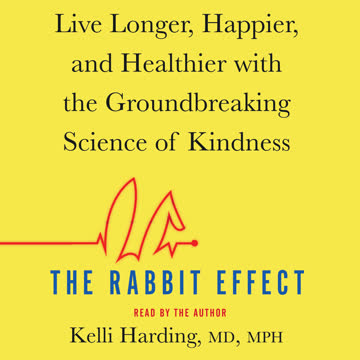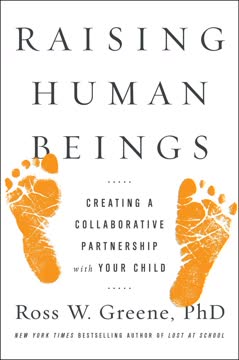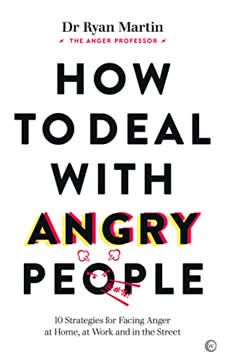Key Takeaways
1. Hidden Factors Shape Our Health More Than Medical Care
Data shows that clinical care, as we currently provide it, isn't actually making us much healthier.
Medical care isn't enough. While modern medicine excels at treating acute conditions, it accounts for only 10-20% of a person's overall health status. The majority of our health is determined by social, environmental, and behavioral factors - the "hidden factors" of health. These include our relationships, work environment, education, neighborhood, and exposure to stress and trauma.
Social determinants matter. Research consistently shows that factors like income, education level, and social support have a more significant impact on health outcomes than access to healthcare. For example, studies have found that living in a supportive community can increase life expectancy more than having health insurance.
Prevention is key. Addressing these hidden factors can prevent many health issues before they require medical intervention. This includes:
- Fostering strong social connections
- Creating healthy work environments
- Promoting education and lifelong learning
- Designing walkable neighborhoods with access to nature
- Reducing exposure to chronic stress and trauma
2. Social Connections Are Vital for Longevity and Well-being
Loneliness is equivalent to smoking fifteen cigarettes a day or heavy alcohol use.
Relationships are health-protective. Strong social ties have been shown to boost immune function, lower stress levels, and increase longevity. Studies have found that people with strong social connections have a 50% increased likelihood of survival compared to those with weaker social relationships.
Isolation is dangerous. Chronic loneliness increases the risk of:
- Heart disease and stroke by 30%
- Premature death by 50%
- Depression and anxiety
- Cognitive decline in older adults
Community matters. The "Roseto Effect" demonstrated how a close-knit community can dramatically improve health outcomes, even in the face of unhealthy individual behaviors. Building and maintaining social connections through family, friends, and community involvement is a crucial aspect of overall health.
3. Work Environment Significantly Impacts Physical and Mental Health
We spend about a third of our lives at work, and that's not including commute time.
Job stress is pervasive. In the U.S., 40% of workers report their job as "very or extremely stressful." This chronic stress can lead to burnout, physical health problems, and mental health issues.
Workplace factors affect health. Key elements of a healthy work environment include:
- Autonomy and control over one's work
- Fair treatment and respect from supervisors and colleagues
- Opportunities for growth and purpose
- Work-life balance
- Positive social connections with coworkers
Dignity matters. The Whitehall studies showed that workers in lower-status jobs had significantly higher rates of heart disease and mortality, even when controlling for lifestyle factors. This highlights the importance of workplace dignity and respect for health outcomes.
4. Education and Lifelong Learning Boost Health Outcomes
Data shows that clinical care, as we currently provide it, isn't actually making us much healthier.
Education is health-protective. Higher levels of education are consistently associated with better health outcomes, including:
- Longer life expectancy
- Lower rates of chronic diseases
- Better mental health
- Healthier behaviors
Lifelong learning matters. Continuing to learn and engage intellectually throughout life has been shown to:
- Reduce the risk of cognitive decline and dementia
- Improve overall well-being and life satisfaction
- Increase social connections and sense of purpose
Mechanisms of impact. Education affects health through multiple pathways:
- Improved health literacy and decision-making
- Higher income and better access to resources
- Increased sense of control and self-efficacy
- Stronger social networks and support systems
5. Neighborhood Design and Access to Nature Affect Overall Health
In America, a person's zip code is a stronger predictor of health than his genetic code.
Neighborhood matters. The built environment of our neighborhoods significantly impacts our health through:
- Walkability and opportunities for physical activity
- Access to healthy food options
- Exposure to air and noise pollution
- Availability of green spaces and nature
- Social cohesion and community connections
Nature is healing. Regular exposure to natural environments has been shown to:
- Reduce stress and improve mental health
- Lower blood pressure and heart rate
- Boost immune function
- Improve cognitive function and creativity
Designing for health. Urban planning and community design can promote health by:
- Creating walkable neighborhoods with safe sidewalks and bike lanes
- Ensuring access to parks and green spaces
- Developing mixed-use areas with easy access to services and healthy food options
- Fostering community spaces that encourage social interaction
6. Fairness and Equal Treatment Are Crucial for Individual and Collective Health
Stigma about obesity in medical settings makes obese people less inclined to seek medical care.
Discrimination harms health. Experiencing discrimination and unfair treatment has been linked to:
- Increased stress and inflammation
- Higher rates of chronic diseases
- Poorer mental health outcomes
- Reduced access to quality healthcare
Implicit bias affects care. Healthcare providers' unconscious biases can lead to:
- Misdiagnosis or delayed diagnosis
- Undertreatment of pain and other symptoms
- Reduced patient trust and engagement in care
Equity promotes health. Creating fair and just systems in healthcare, education, employment, and community design can:
- Reduce health disparities between groups
- Improve overall population health
- Foster trust and social cohesion
7. Childhood Experiences and Trauma Have Lasting Health Effects
Adverse childhood experiences shave years off someone's life.
ACEs impact adult health. Adverse Childhood Experiences (ACEs) such as abuse, neglect, or household dysfunction have been linked to:
- Increased risk of heart disease, cancer, and other chronic conditions
- Higher rates of mental health problems and substance abuse
- Shortened life expectancy
Trauma alters biology. Childhood trauma can lead to long-term changes in:
- Stress response systems
- Immune function
- Brain structure and function
- Gene expression through epigenetic modifications
Prevention and intervention are key. Addressing childhood trauma through:
- Early intervention programs
- Trauma-informed care in schools and healthcare settings
- Supporting positive parenting practices
- Building resilience in children and families
can have significant long-term health benefits for individuals and communities.
8. Stress and Its Perception Dramatically Influence Health Outcomes
It seems that stress is like a monster under the bed. If you worry about him, he's a nightmare. But he doesn't cause trouble if you don't believe in him, or he might even become a friend if you offer him a cookie.
Stress perception matters. How we perceive and respond to stress can be more important than the stressor itself. Studies have shown that people who view stress as harmful have worse health outcomes than those who see it as a challenge or opportunity for growth.
Chronic stress is harmful. Prolonged activation of the stress response can lead to:
- Increased inflammation
- Weakened immune function
- Accelerated cellular aging
- Higher risk of chronic diseases
Stress management is crucial. Effective stress reduction techniques include:
- Mindfulness and meditation
- Regular exercise
- Social support and connection
- Reframing stress as a challenge rather than a threat
- Engaging in purposeful activities
9. Mind-Body Connection Is Central to Understanding Health
Our nation spends a fortune on health care, yet we remain remarkably unwell.
Mind and body are inseparable. Mental and physical health are deeply interconnected, with each influencing the other. This understanding challenges the traditional biomedical model that separates mind and body.
Mental health affects physical health. Psychological factors can impact physical health through:
- Altered immune function
- Changes in health behaviors
- Direct physiological effects (e.g., stress hormones)
Physical health affects mental well-being. Chronic physical conditions can lead to:
- Increased risk of depression and anxiety
- Cognitive changes
- Reduced quality of life
Holistic approach is needed. Effective healthcare must address both mental and physical aspects of health, recognizing their interconnectedness and the role of social and environmental factors.
10. Kindness and Compassion Are Powerful Health Promoters
Kindness and love, after all, are abundant renewable resources.
Compassion benefits health. Acts of kindness and compassion have been shown to:
- Reduce stress and inflammation
- Boost immune function
- Improve cardiovascular health
- Enhance mental well-being
Self-compassion matters. Treating oneself with kindness and understanding can:
- Reduce anxiety and depression
- Improve resilience to stress
- Promote healthier behaviors
Collective compassion heals. Creating a culture of kindness and compassion can:
- Foster social connections and trust
- Reduce health disparities
- Improve collective well-being and social cohesion
Practical steps: Incorporating kindness into daily life through:
- Random acts of kindness
- Volunteering and community service
- Practicing gratitude
- Cultivating empathy and understanding for others
can have significant positive impacts on individual and community health.
Last updated:
FAQ
1. What’s The Rabbit Effect by Kelli Harding about?
- Holistic health focus: The book explores how kindness, social connections, and the broader social environment profoundly influence physical and mental health, going beyond traditional biomedical models.
- Hidden factors: Dr. Kelli Harding reveals that love, friendship, dignity, and community are crucial, often-overlooked determinants of health and longevity.
- Inspiration from research: The title comes from studies showing that rabbits treated with kindness had better health outcomes, illustrating the impact of social environment on physiology.
- Biopsychosocial approach: Harding advocates for integrating biology, psychology, and social context to fully understand and improve health.
2. Why should I read The Rabbit Effect by Kelli Harding?
- New health paradigm: The book challenges the conventional focus on medical care, urging readers to consider social and emotional factors as essential to health.
- Evidence-based insights: It presents scientific research linking kindness, compassion, and social equity to longer, happier, and healthier lives.
- Practical guidance: Harding offers actionable tools and reflections to foster kindness, self-compassion, and community engagement.
- Timely message: With rising chronic illness and health disparities, the book calls for a radical rethink of healthcare, emphasizing compassion as a foundation for well-being.
3. What are the key takeaways from The Rabbit Effect by Kelli Harding?
- Kindness as medicine: Acts of kindness and compassion have measurable benefits on immune function, stress reduction, and longevity.
- Hidden factors matter: Social determinants like childhood trauma, workplace fairness, and neighborhood environment significantly impact health outcomes.
- Mind-body unity: Mental and physical health are deeply interconnected, with inflammation as a key biological link influenced by stress and social experiences.
- Collective health: Building trust and addressing social inequities are vital for societal well-being, requiring both individual and community action.
4. What are the “hidden factors” of health in The Rabbit Effect by Kelli Harding?
- Definition: Hidden factors are social, environmental, psychological, and relational conditions that shape health outcomes but are often overlooked in traditional medicine.
- Model overview: Harding’s model radiates from the individual outward to include intimate relationships, social ties, work, education, neighborhood, fairness, and societal influences.
- Impact on outcomes: These factors explain why patients with similar medical diagnoses can have vastly different health trajectories.
- Integration with care: Addressing hidden factors alongside clinical care is essential for improving health and reducing disparities.
5. How does the biopsychosocial model relate to health in The Rabbit Effect by Kelli Harding?
- Model explanation: Developed by Dr. George Engel, the biopsychosocial model expands health understanding beyond biology to include psychological and social dimensions.
- Application in the book: Harding uses this model to explain cases where medical tests alone don’t capture the full picture of health, emphasizing the need to consider life context.
- Foundation for hidden factors: The biopsychosocial model underpins Harding’s framework, uniting medicine, mental health, and public health perspectives.
- Holistic care: It advocates for integrated care that addresses the whole person, not just symptoms.
6. How do intimate relationships and social ties affect health in The Rabbit Effect by Kelli Harding?
- Early life impact: Loving touch and secure attachments in infancy influence gene expression and shape lifelong health and emotional resilience.
- Oxytocin and bonding: Physical touch and social grooming release oxytocin, reducing stress and fostering empathy and trust.
- Adult relationships: Strong intimate bonds provide emotional support, synchronize physiological responses, and buffer stress, contributing to longer, healthier lives.
- Community examples: Close-knit communities like Roseto and Okinawa demonstrate that social ties correlate with lower disease rates and longer life spans.
7. What does The Rabbit Effect by Kelli Harding say about the impact of work and workplace fairness on health?
- Stress and allostatic load: Chronic work stress activates the body’s stress response, leading to wear and tear that increases disease risk.
- Whitehall studies: Research shows a social gradient where lower employment status correlates with higher mortality, independent of traditional risk factors.
- Job control and dignity: Having autonomy, supportive supervisors, and meaningful work improves mental and physical health.
- Workplace interventions: Breaks, naps, and supportive environments reduce burnout and enhance well-being.
8. How does education and a sense of purpose influence health in The Rabbit Effect by Kelli Harding?
- Telomeres and aging: Education and purpose correlate with longer telomeres, which protect chromosomes and predict longer, healthier lives.
- Lifelong learning: Continuous intellectual engagement and finding meaning in life reduce stress, lower risk of dementia, and improve overall health.
- Protective effect: Better-educated individuals have lower risks for chronic diseases and premature death.
- Purpose-driven living: A sense of purpose is linked to resilience and healthier behaviors.
9. What does The Rabbit Effect by Kelli Harding reveal about the impact of neighborhoods and environment on health?
- Food deserts and obesity: Access to healthy food and walkable neighborhoods influence diet quality and physical activity, affecting obesity and metabolic health.
- Environmental stressors: Noise, pollution, and unsafe neighborhoods increase stress, shorten telomeres, and raise risks for cardiovascular and mental health problems.
- Community action: Initiatives like community gardens and social events improve neighborhood safety, cohesion, and health outcomes.
- Social determinants: Where you live can be as important as genetics or medical care in determining health.
10. How does The Rabbit Effect by Kelli Harding address fairness, discrimination, and bias in health?
- Discrimination as stress: Experiences of bias and microaggressions activate stress pathways, increasing inflammation and risk for chronic diseases.
- Implicit bias in medicine: Unconscious biases among healthcare providers lead to disparities in diagnosis, treatment, and outcomes, especially for marginalized groups.
- Tools for equity: The book recommends tools like the Implicit Association Test and bias-reducing interventions to promote fairness.
- Call to action: Harding encourages civil discourse, speaking up against discrimination, and supporting policies for equity.
11. What is the mind-body connection described in The Rabbit Effect by Kelli Harding?
- Interconnected systems: Mental and physical health are inseparable, with stress triggering inflammation that contributes to diseases like heart disease, cancer, and mental illness.
- Diagnostic challenges: Clinical stories illustrate how mental symptoms can mask physical illness and vice versa, highlighting the need for integrated care.
- Eastern and Western medicine: Harding bridges traditional Eastern concepts like chi with modern neuroimmune science, showing how mind-body practices like meditation improve health.
- Practical integration: Mindfulness and self-care are presented as essential tools for maintaining balance and resilience.
12. What practical tools and advice does The Rabbit Effect by Kelli Harding offer for improving individual and collective health?
- Mindfulness and meditation: Regular practice of loving-kindness meditation and mindfulness can reduce stress hormones and enhance brain plasticity.
- Social engagement: Building supportive relationships, joining groups, and practicing gratitude and awe are recommended to boost emotional well-being.
- Self-care and reframing: Paying attention to warning signs, taking breaks during stress, and cognitively reframing adversity help maintain balance.
- Community action: Practicing microkindnesses, speaking out against injustice, and engaging in community efforts foster a kinder, healthier world.
Review Summary
The Rabbit Effect received mostly positive reviews, praised for its exploration of how kindness, social connections, and compassion affect physical health. Readers appreciated the accessible writing style, scientific evidence, and practical suggestions. Some found the book eye-opening and life-changing, while others felt it lacked groundbreaking ideas. Critics noted political bias and repetitive content. Many reviewers recommended the book for its insights into holistic health and the power of human connection, despite a few who found it dense or basic.
Similar Books
Download PDF
Download EPUB
.epub digital book format is ideal for reading ebooks on phones, tablets, and e-readers.







